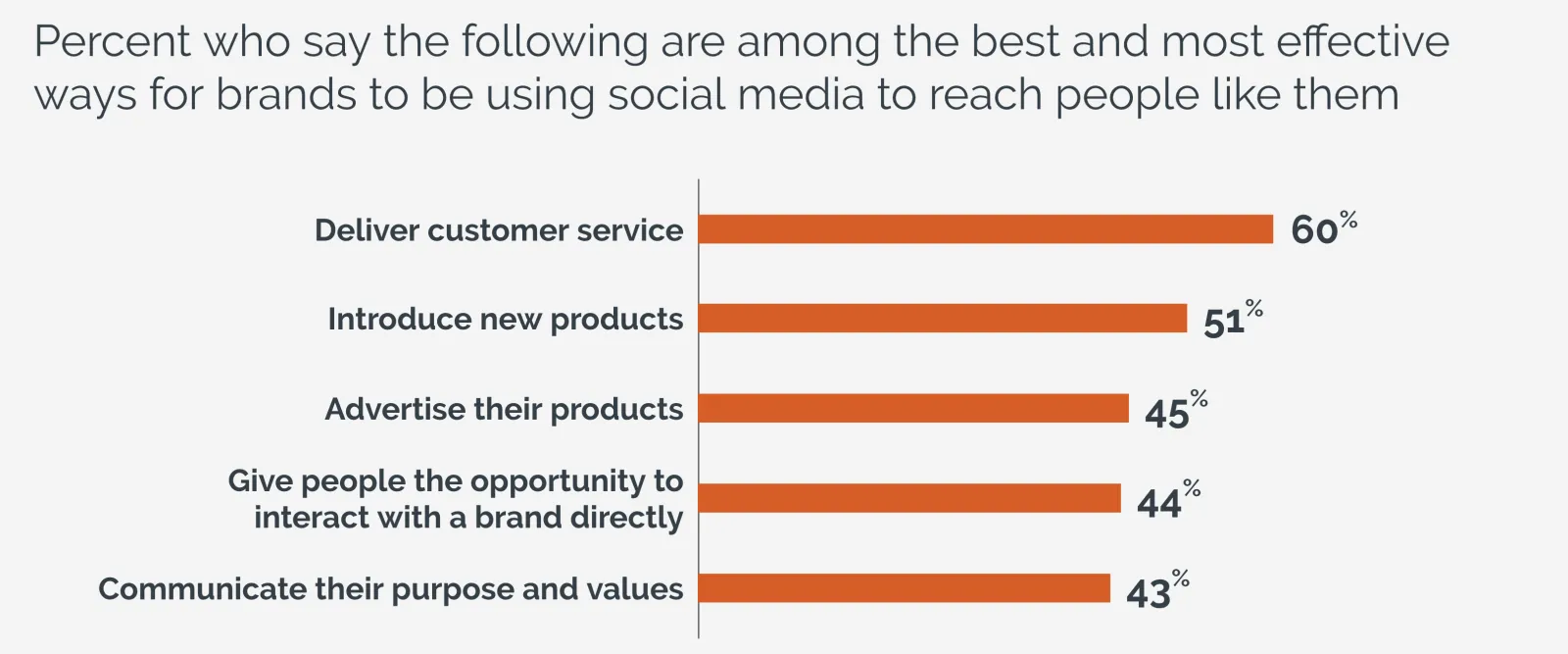The age of the consumer: Part 2
In this two-part series, we explore how consumers are evolving and how your brand can be ahead of the curve. If you haven’t read Age of The Consumer Part 1, we looked at the obsession with research and how brands can use this to their advantage. In this second part, we’ll explore the changing role of social media in our consumer’s path to purchase and how recent research around consumer’s expectations of social are yet more proof that we truly living in the age of the consumer.
2018 represented a crisis year for trust on social media. Let’s start with the Cambridge Analytica scandal. Just the idea that millions of people’s personal data was used without their consent is enough to shake the foundations of trust. On top of that, Facebook confronted unprecedented pressure from users and regulators to improve security, transparency, and accuracy, while Twitter wrestled with controversies over the proliferation of bots on its platform, ultimately purging millions of fake accounts. Is it any wonder that consumer trust has eroded?
- 40% say “I have deleted at least one of my social media accounts in the past year because I did not trust it to treat my personal information properly.”
- 39% say "I am unlikely to become emotionally attached
to a brand unless we are interacting and communicating via social media."
According to Edelman’s 2018 Trust Barometer Report, 60 percent of people no longer trust social media companies. Meanwhile, the Ponemon Institute, an independent research firm specializing in privacy and data protection, reports that trust in Facebook has dropped 66%.
In an age of social skepticism, the rules of the game have changed. In a major pendulum swing, trust has reverted back to immediate friends, family, and acquaintances on social media. Meanwhile, consumers are returning to traditional journalism outlets and local news sources. Beyond the trust issue, it appears social media can have a negative impact on the mental health of consumers, increasing rates of unhappiness, anxiety and even depression. Even Facebook’s own research team acknowledged in a December 2017 release that “when people spend a lot of time passively consuming information—reading but not interacting with people—they report feeling worse afterward.”
Clearly, social media has transitioned from an entertainment medium to a stress factor in our customers’ lives.
The irony is that social media is still at the heart of building emotional bonds. According to the same Eldeman report, 39% of respondents say they’re unlikely to be attached to a brand unless they’re interacting on social media. This means that for brands on these platforms, there are still big opportunities to connect with consumers, despite the challenges this new era of social media presents.
Edelman’s 2018 Trust Barometer Report
-
54% Say they are uncomfortable with marketers tracking in-store purchases for targeting purposes.
-
39% Say it should be illegal for a brand to buy personal information from another company the consumer does business with.
-
49% Say they are not willing to sacrifice some of their data privacy in return for a more personalized shopping experience.
Your consumers are looking for you to do more with social, and to do it with more meaning. They want you to provide customer service, introduce new products, and communicate your values and purpose.They want you to show them how to use and care for products, how to plan for upcoming trips. In short, they’re looking for you to provide value. It’s no longer enough to be merely a vendor; you need to be a partner.
Not surprisingly, companies are attempting to regain trust by putting consumer well-being first. Facebook has an “online well-being” section on its site which includes a Youth Portal, helping young people use the platform in moderation and appropriately. Instagram debuted a well-being division in April 2018, a team dedicated to making the social media platform a healthier space to visit. One of the first tasks was to filter bullying comments to “foster kindness within the community.” Google launched a new digital well-being initiative in May aiming to help users find the “right balance” by monitoring habits. As part of the program, YouTube introduced its Take a Break feature, which allows viewers to install custom reminders to take a breather from any online bingeing. Similarly, Facebook and Instagram have introduced time management features to prevent over usage.
Finally, I leave you with the notion that the average Canadian spends 1 hour and 47 minutes a day on social (including messaging). That’s a lot of time.
Belief is the new benefit.
With these shifts in how consumers relationship with social, here are some questions to ask yourself or your social media team:
-
Are we using social media to meet customers demands, beyond pushing advertising content ?
-
Who in the organization owns the chat response feature (we see several ski resort clients struggling with this and passing it from customer service to marketing) and do we have clear standards for response time and brand voice?
-
Am I doing something positive to build the emotional connection my consumers are looking for when they interact with us on social?
Most importantly, it’s critical to ask yourself what can my brand do to regain trust? You might think you haven’t lost it (and maybe you haven’t), but now is the time to be proactive. Now, more than ever, is the time to distinguish yourself by connecting with your customers in meaningful ways.








